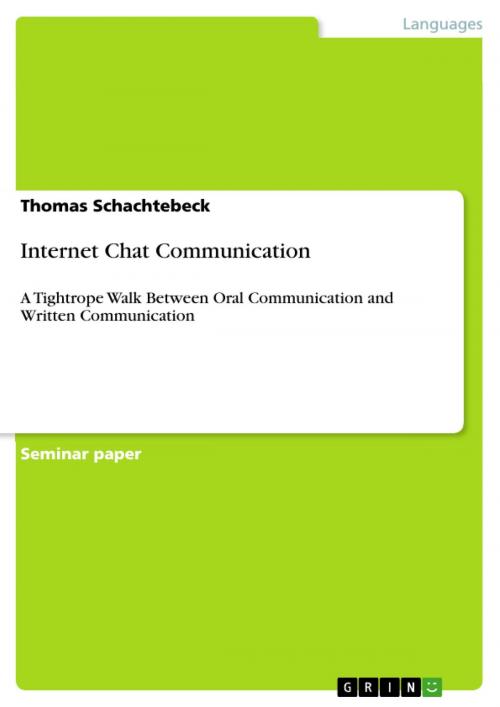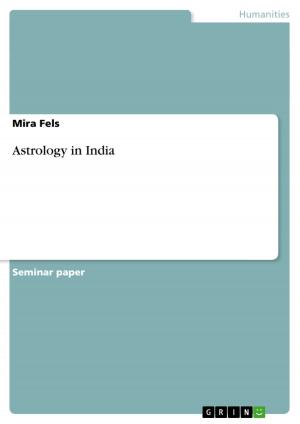Internet Chat Communication
A Tightrope Walk Between Oral Communication and Written Communication
Nonfiction, Entertainment, Drama, Anthologies| Author: | Thomas Schachtebeck | ISBN: | 9783640810727 |
| Publisher: | GRIN Publishing | Publication: | January 26, 2011 |
| Imprint: | GRIN Publishing | Language: | English |
| Author: | Thomas Schachtebeck |
| ISBN: | 9783640810727 |
| Publisher: | GRIN Publishing |
| Publication: | January 26, 2011 |
| Imprint: | GRIN Publishing |
| Language: | English |
Seminar paper from the year 2005 in the subject English - Miscellaneous, grade: 2,3, Free University of Berlin (Sprachenzentrum), course: Sprachpraxismodul Oral Skills/Writing Skills II, language: English, abstract: Due to the fact that the number of Internet users worldwide has grown at 146.2% within the last five years from 2000 to 2005, the Internet itself has become one of the most important and essential kinds of modern media we can imagine these days - at least in the industrialised countries . Recent research statistics from the 31st of March 2005 show that there are currently 888,681,131 Internet users all over the world, which constitutes 13.9% of the whole world population . The main reason why the Internet has established such a prominent position in the world of media is because it covers a wide-ranging field of interests such as news, career, spare time activities, and communication. Since human beings are primarily characterised by an intrinsic urge to communicate with one another, it is no wonder that the invention of the Internet has brought up various forms of computer mediated communication (CMC). One of the most popular and favoured forms of CMC is Internet Chat because it is said to be so close to face-to-face communication like no other kind of mediated communication. In the following section, this report will first give some brief background information about Internet Chat; then it will investigate the general structure pattern of chat conversations; and finally, it will analyse the relationship between verbal and nonverbal language aspects of chat communication in order to find out whether Internet Chat can really be regarded as a written form of oral communication which integrates oral components into graphical constructions of utterances (Schmidt 2000 : 126).
Seminar paper from the year 2005 in the subject English - Miscellaneous, grade: 2,3, Free University of Berlin (Sprachenzentrum), course: Sprachpraxismodul Oral Skills/Writing Skills II, language: English, abstract: Due to the fact that the number of Internet users worldwide has grown at 146.2% within the last five years from 2000 to 2005, the Internet itself has become one of the most important and essential kinds of modern media we can imagine these days - at least in the industrialised countries . Recent research statistics from the 31st of March 2005 show that there are currently 888,681,131 Internet users all over the world, which constitutes 13.9% of the whole world population . The main reason why the Internet has established such a prominent position in the world of media is because it covers a wide-ranging field of interests such as news, career, spare time activities, and communication. Since human beings are primarily characterised by an intrinsic urge to communicate with one another, it is no wonder that the invention of the Internet has brought up various forms of computer mediated communication (CMC). One of the most popular and favoured forms of CMC is Internet Chat because it is said to be so close to face-to-face communication like no other kind of mediated communication. In the following section, this report will first give some brief background information about Internet Chat; then it will investigate the general structure pattern of chat conversations; and finally, it will analyse the relationship between verbal and nonverbal language aspects of chat communication in order to find out whether Internet Chat can really be regarded as a written form of oral communication which integrates oral components into graphical constructions of utterances (Schmidt 2000 : 126).















